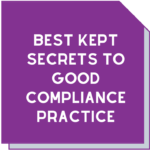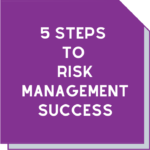5 simple steps for meaningful management reviews
written by Maree Stuart
The prospect of doing a management review is not exactly a cause for celebration.
Unlike birthdays, which also come around annually, management reviews can be dull, life-sucking events that last way too long.
But it is possible to turn your management reviews from boring to brilliant!
Our 5 simple steps explain how to do just that.
1. Timing is everything
Do you time your management review just before a NATA assessment? That makes sense because it’s a good reminder that you need to complete the task.
But in dealing with all the other things that you need to do to prepare for an upcoming external audit, adding a big meeting to the to-do list can be unhelpful. Adjusting the timing to better suit management’s availability is the key to overcoming this issue.
It would also make sense to align the meeting with the organisation’s financial year or budget period. Consider whether you can roll this into your business planning meeting. It’s a great way to ensure you make well-informed decisions.
Finally, remember that management reviews don’t have to be a one-off meeting covering everything. You can do it over several meetings with inputs from different levels within the lab. Assign responsibility for the review to a senior staff member (most likely the lab manager or quality manager). They can conduct a final review meeting after going through all the contributions.
2. Who’s involved?
Management review involves management. It’s different from a routine staff meeting where you have management and non-managerial staff coming together.
Make sure you have all the right people “in the room”. Remember that might not just be the Quality Manager and Lab Manager. If you have other departments like Human Resources and Finance, it’s a good idea to also involve the managers of those departments in management review. It helps with making great decisions that work.
Think about if you even need to formally “meet”. These days, collaboration tools might be an effective way of covering the issues, getting input, and making decisions. IT could be the solution to finding the perfect time that suits eveyone.
3. What do you need to cover?
Remember, it’s your system and not the auditor’s so it’s about your management system. Ensuring the lab’s management system is suitable, adequate, and effective is simply good business practice.
Whilst there is a laundry list of things to cover in a management review, they boil down to four basic questions to consider:
Suitable – do the processes and operations you have in place facilitate and support the lab’s activities?
Adequate – is the lab meeting all the requirements of the standard? Is the lab complying with regulatory and contractual requirements?
Effective – is the management system accomplishing the stated purpose of producing the intended or expected results?
Efficient – examine the relationship between the resources and the results you are achieving.
The inputs that are included in detail in the ISO Standards are sometimes interrelated. That means you might be able to consider them in a different order to how they are listed in the standard if that makes sense to you.
ISO/IEC 17025 lists some mandatory inputs for your management review. There is a slightly different list in ISO 15189 and ISO 17020.
Make this list of inputs the agenda items for discussion. Or if you are doing things remotely, allocate the input items to relevant staff to provide information. For instance, you might have one person in your lab with responsibility for equipment whom you could ask for input on the suitability of equipment and maintenance and calibration intervals.
We’ve listed the typical inputs and included some notes for you to consider.
- Changes in relevant internal and external issues – internal issues could include new equipment, new policies or personnel leaving and retiring. External issues include those beyond the control of the lab such as the pandemic, regulatory changes, changes to standards that are critical to your business, or perhaps a new competitor.
- Fulfilment of objectives – have you met the objectives you aimed to meet?
- Suitability of policies and procedures – is your QMS reflecting what your lab is actually doing? Are the structure and content of the QMS documents still fit for purpose? If you have external documents incorporated in your system, are they the current versions?
- Status of actions from previous management reviews – check if those actions were assigned and accomplished. Is there anything outstanding?
- Outcomes of recent internal audits – this is a good chance to review the process as well as the outcomes
- Corrective actions – show what these were and whether the actions were implemented and monitored. Were any repeated? Were staff aware of the process and did anything fall through the cracks? What trends can you identify?
- Assessments by external bodies – who did this and when is the next one? Is the next one scheduled? Were there any findings and if so, why weren’t these picked up as a non-conformance during your internal audit process?
- Changes in the volume or in the range of laboratory activities – have you detected any trends? Do you need more financial, equipment or human resources? Is there a need for more training or perhaps cross training of staff?
- Customer and personnel feedback – what are your staff telling you? How do you get feedback from them and what is that process? If you’re collecting feedback from customers, is this effective? Sending out 100 surveys but only getting one response means you need to try something else.
- Complaints – are your complaints going to the right person? Are you addressing them according to the requirements of the standard? Are there any trends?
- Effectiveness of any implemented improvements – have you monitored these and if so, where did you document that information?
- Adequacy of resources
- Results of risk identification – the standard mentions taking actions to address risks and opportunities. What risks did you identify? Were they taken, mitigated, or avoided?
- Outcomes of the assurance of the validity of results – did you take part in any proficiency or interlaboratory testing and if so, what were the results? Outcomes could also include QC check results, control charts or any statistical analysis you’ve done
- Other relevant factors, such as monitoring activities and training.
4. Recording your management review
 There is no need to record the discussion like Hansard. However, you do need to make sure there is enough detail in the notes from your management review to be able to follow up on any decisions and show the auditor that you did actually discuss something.
There is no need to record the discussion like Hansard. However, you do need to make sure there is enough detail in the notes from your management review to be able to follow up on any decisions and show the auditor that you did actually discuss something.
Speaking of decisions, make sure you record those decisions and any actions because of those decisions. Record the specific action, the timeframe for implementation and who is responsible for taking the action.
Don’t forget about other media for recording the meeting, too.
5. Tell your staff
Management reviews are not meant to be a secret society.
All organisations rely on their total resources to deliver success. When it comes to the success of your management system, you need everyone you can possibly bring in. So it’s important to let non-managerial staff know about where they can help.
Of course, there are some sensitive things that you could discuss at a management review. You’ll need to be careful about releasing all the details.
Tell your staff about the decisions, actions, and any changes discussed at your management review. They will feel more a part of the organisation and its success.
Bonus step! Make it engaging!
Just because a meeting has senior managers in the meeting doesn’t mean you can’t make it fun. It helps make the meeting more effective, focused, engaging, and memorable. Ideas include having a list of words that are banned, with some kind of forfeit for slipping up. Or if someone wants to speak, they can only do so when they have the ball or other silly item signifying that it’s their turn to speak.
That’s a lot of work!!
It really is. But this is also an important and valuable process that will reap benefits for your business.
However, if you need help with any of it, we’re right here for you.
Maree is a highly experienced consultant and facilitator with years of practical, hands-on experience both with NATA and within the lab environment. She’s been on both sides of the table and brings that expertise to benefit your business.
Call Maree on 0411 540 709 or email info@masmanagementsystems.com.au to arrange a confidential, obligation-free discussion about how we can help your business to work better and smarter.
Remember, you don’t have to do this alone!
Download the article 5 Simple Steps For Meaningful Management Reviews






